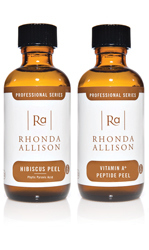
In this final post on “how to use education to unlock your success,” I will build upon the importance of product and ingredient knowledge, as well as how to enhance your tools.
In today’s market consumers are demanding more, and rightly so. As skin care professionals we have to be prepared to meet those demands, while differentiating ourselves from the competition – and knowledge is the gateway to delivering results more effectively and efficiently.
Long gone are the days when facial treatments simply included a cleanse, mask and moisturizer, more about relaxation than actively making a difference to the skin’s appearance and structure. Today, we have at our disposal a bevy of technologies and intelligent ingredients. Knowing how to work with these advancements, and even enhance them, is a must.
Advancing Ingredient Intelligence
You may already be adept in working with some of the time-tested ingredients like retinol, AHAs, enzymes, and vitamins, but there are ways to boost their effects by coupling them with new technologies and ingredients.
For instance, we know the benefits of retinol and that they are boosted when rendered in a peel application. What’s new however is the addition of a tri-peptide, (see our Vitamin A+ Peptide Peel) which bolsters the work of the retinol to stimulate the desquamation process, and tone and firm on a deeper level.
We also know how important AHAs are to skin rejuvenation, but the strength is not always compatible with some skin types. Through research we discovered flower acids, aptly called second-generation AHAs because they are much gentler, but still produce a very good peel.
Enhancing the Tools
Similarly, new discoveries have been made in the art and science of “designer treatments” – the idea of combining intelligent ingredients with advanced skin care modalities and technologies such as peels, body peels, microdermabrasion, intense pulse light (IPL), laser, LED light therapy, and radio frequency. This is garnering a lot of attention from clients who are interested in how you will take their treatments to the next level.
A strong knowledge in ingredients and how they work will support you in determining how they may be combined with each other. Why does this matter? Often times it allows us to affect changes in the skin more rapidly, enhance the results, speed recovery time, and help mitigate any negative side effects of certain procedures like hyperpigmentation or excess inflammation.
Of course, client’s skin and desired results will also play a role in which skin care ingredients and advanced technologies may be paired, but typically combining modalities with ingredients or products that purport similar results will usually enhance the outcome. This, once again, requires in depth product and ingredient knowledge, and understanding of how to work with active ingredients, and the ability to effectively analyze the skin.
There are near endless ways in which to customize advanced treatments, and the only way to learn which will be most effective for your client is to seek out seminars, webinars, self-experimentation, and examining protocols developed by individual skin care companies. At a glance, a few ingredient and advanced treatment combinations that work well together include:
- Microdermabrasion – may be enhanced using ingredients that aim to lighten and gently retexturize and regenerate the skin like kojic acid, L-arbutin, L-arginine and L-mandelic acid. It will also be intensified with combinations of L-lactic and salicylic acid, papain enzyme, and bromelain enzyme, which will further exfoliate keratin and support tissue regeneration.
- Epidermal leveling (dermaplaning) – using retinols, glycolic acid and salicylic acid will help accelerate exfoliation.
- Laser (IPL, Fraxel or Pixel) – enzymes or light peels may be applied as pre-treatments to enhance the skin lightening and resurfacing effects. Skin also recovers much quicker.
- LED and microcurrent – these work wonders with treatments and ingredients that aim to nourish, recharge and hydrate the skin. Certain acid formulas also work well with LED to boost the firming and toning benefits.
- Skin peels – enzymes, AHAs and retinols typically are good pre-treatments and enhance the results. Soothing anti-inflammatories and wound-repair topicals such as epidermal growth factors, amino acids and peptides in the post-treatment process, speed the recovery time.
Whether through self-education, research, professional training, or webinars, hopefully this has inspired you to make an effort to always learn. When you stop learning you become stagnant, and if you ever feel your passion begin to wane, education is one of the best ways to revive it. Besides, clients love to know their aesthetician regularly attends conferences and seminars to bring back new information, products and ideas.
Question: What advanced modalities and ingredients have you been working with and what have been your results?
